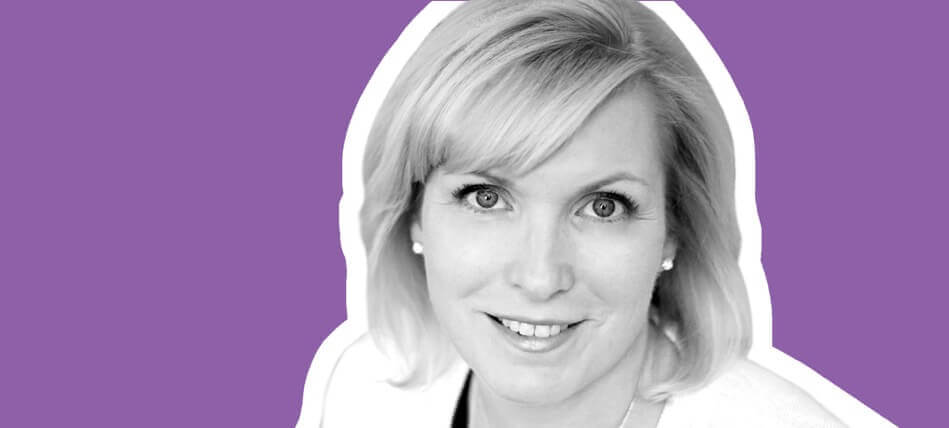Reaching Game-Changing Connectivity, with SAP’s Alison Biggan

In this episode, SAP’s Chief Product & Field Marketing Officer Alison Biggan provides insight on the latest innovative ways in which connectivity and data exchange help businesses scale, compete, and grow. In conversation with our host Vivaldi CEO Erich Joachimsthaler, Alison shares an insider view on how data platforms allow businesses to operate with greater efficiency, from speed to governance across data points, to accomplish improved outcomes with advanced technology. Find out how a game-changing data platform allowed Gustave Roussy, a 2018 SAP Innovation Award winner, one of the world’s premier cancer research institutes and treatment centers, to revolutionize how the organization provides research and offers personalized patient care.
See below for highlights from their conversation:
Q: When you think of of data and how data is exchanged today in businesses, how do they enable an impact with customers?
A: We’ve all been talking for many years about data and where it’s coming from and how we’re using that whether that’s through analytics or in other ways. But what’s changed over the last decade is both the technology that allows you to access use the data and also quite frankly the amount of data that’s being created. Businesses can use data to be more competitive, innovate and do a better job observing your customers.
Q: Data is the new oil, but we are still having to create the engines for the oil. Is SAP part of building those that engines?
A: We would call that engine a data platform. As you think about how platforms have evolved and become more important supporting businesses, a data platform is perhaps one of the most important things to have. It not only gives you access to data, but makes sure that data is secured and governed. It also allows you to bring in data from external sources. For example, the role of data in medicine and cancer treatment. We have a customer in Europe called Gustave Roussy, who’s the biggest cancer treatment agency in Europe. They are using data to improve cancer treatment, but more importantly, they’re using data to deliver personalized ancestry and personalized medicine. Gustave Roussy has used data from 300,000 cancer patients and overlaid it with clinical data, pharmaceutical data, etc. and have improved the cure rate of 55% percent of their cancer patients. Their goal is to increase this to 75% by 2030. This is made possible by both accessing data and having the platform, or the engine as you said, to bring those pieces of data together and act on them.
No matter what example we’re referring to, there are four characteristics of what a good data platform will deliver to you. You not only have to be able to collect and access the data, you have to be able to trust it. You need to have visibility and connectedness, and be able to take the data from various sources and connect it into your core systems, whether those are medical or business applications. You also need to be able to operationalize the data in a single source, regardless of the type of data. Lastly, you need to have flexibility, so the data could come from almost anywhere. It could be data that already exists, data that is completely external to your organization, or new data. Some of this is technology enabled, but fundamentally it comes down to bringing the data together and then doing something with it that’s meaningful.
Q: What is the challenge of enabling a digital enterprise? To what extent is it also a human problem? For example, do doctors now need to learn how to treat patients in a new way that incorporates new technology?
A: The things we’ve been discussing have been core to many businesses’ operations. For example, database is not a new technology, but there are new advanced versions of existing technologies available. I think the greatest barrier is not so much user experience, but is more feeling content with what I’m doing today and feeling cautious about introducing something that may hold great benefit but may also disrupt the business. So it’s less about technology not being possible, but more about feeling content with current business operations that seem to be working well enough, but at the same time, paralleling that with the immense pressure for businesses to reimagine their business models, to be more competitive, to drive higher margin. Inevitably, those who parallel perspectives come together and look to technology as one of the key ways to take the business from a legacy situation to establishing a new more advanced data platform.
Q: Is there an example of a company you’ve worked with to initiate change in business operations and processes?
A: An example that pops in mind for me is Stara, a company in Latin America that uses data in agriculture to change food production. This is a great example of a company that has a very specific business around equipment, farming and agriculture that has used data and connectivity to do their core business and enhance food production. They’ve seen both business benefits and societal benefits enabled by technology, and when working with these companies, it really matters what we’re delivering back to the world we live in.
Tune into more of The Business of Platforms podcast here. If you’d like to learn more about Vivaldi’s platform strategy offering, contact us at hello@vivaldigroup.com.